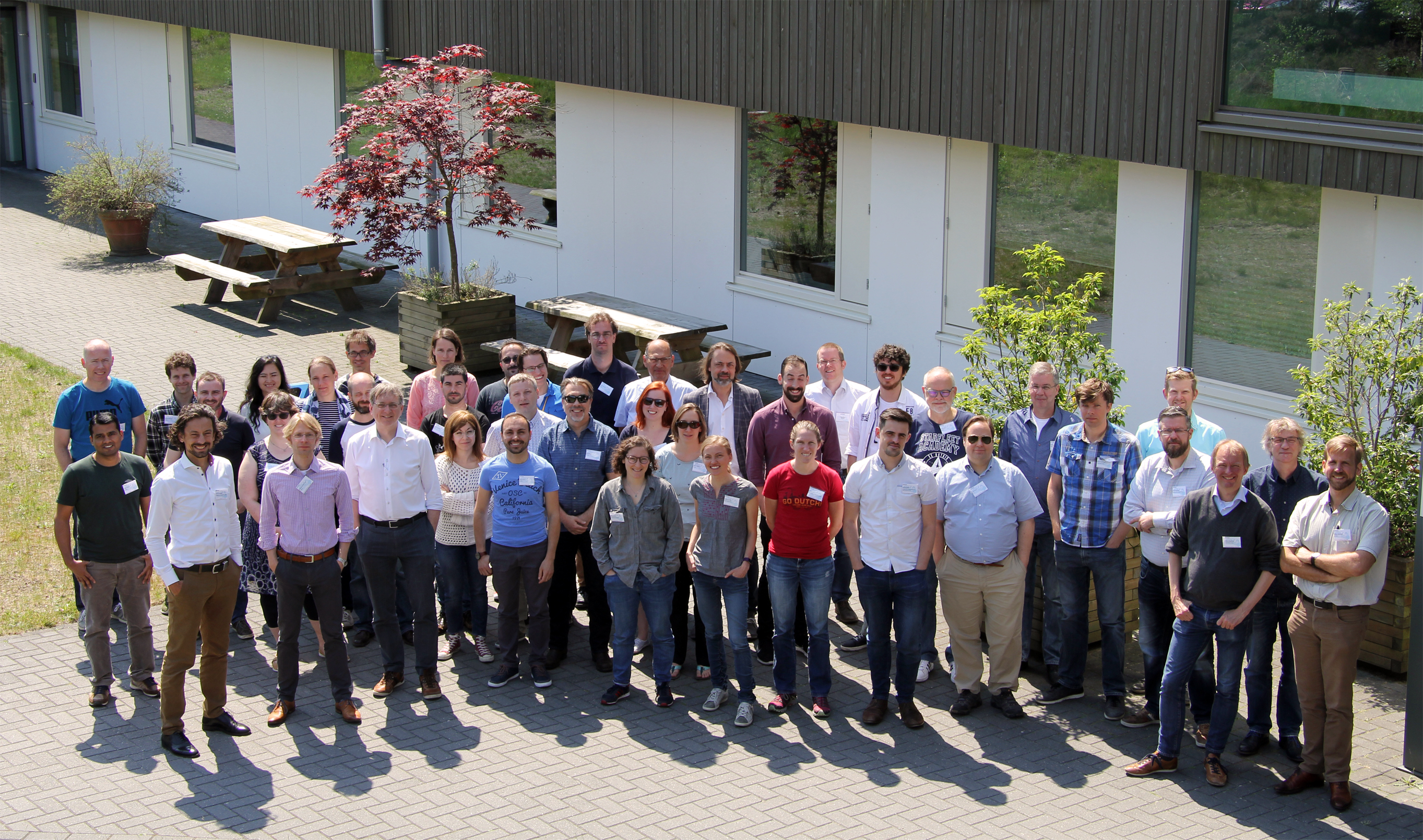![]() © Jesper Spraakman, Koos Kegel, Jeroen Herrewijnen, Sjouke Kuindersma, Gijs Schoonderbeek, Paula Fusiara; BrainBricks from SunIdee
© Jesper Spraakman, Koos Kegel, Jeroen Herrewijnen, Sjouke Kuindersma, Gijs Schoonderbeek, Paula Fusiara; BrainBricks from SunIdee
Do you want a huge number of creative ideas in a short amount of time but you do not know how to trigger your team or how to go about it?
Ask the Mechanical Group!
We can facilitate your innovation process with a very simple, but effective approach towards concepts creation (it is suitable for team building as well!). Here is the recipe:
You will need the following ingredients:
(contents of P.'s brainstorm Magic Box, no it is not a pancake baking kit according to some:))
- 3 decks of BrainBricks
- Set of colorful hexagonal post-its
- Stationary
- Fuel for the mind
- 10 sheets of A3
- Set of uninhibited & open minds (obviously these are not included in the Magic Box, you have to seek & arrange those minds yourself, challenging enough?)
- Multidisciplinary team (make sure NOT to invite those who reveal any signs of features leaning towards strong or narrow-minded conservatisms)
- 1 small furnished office
Rules of the game
You lock up 1 Digital &Embedded Signal Processing Engineer in a small furnished office together with 1 System Engineer, 2 Mechanical Engineers, 1 Research Instrument maker and a Mechanical Engineering Graduate;
Give them a set of BrainBricks (a facilitator is needed, otherwise chaos is guaranteed)
Tell them that they are free to say anything (I mean really anything, a free opinion zone); no idea is bad, freaky ideas are more than welcome, criticism is forbidden!
Give them at least 2 hours (do not forget to FUEL* them)
Example Goal:
Come up with 10 creative ideas for generic cooling for Gemini Project.
But first, DO the warm up:
Show 1 card at a time, induce associations to each uncovered card; straightforward descriptions will not be rewarded, facilitator will only accept associations. A person with the tallest deck of cards ... gets a cookie*** (if there are any left).
BrainBricks? What kind of cards are these, you may ask? A good mix of pictures of all kinds of animals (biomimicry is all around us, yay!! definitely!), landscapes, objects, people, events, buildings ... everything that can trigger the mind and generate associations.
Shake & stir 'em up (the brains), have a good facilitator and give your team sufficient time to settle and you will be amazed with the result.
Ideas are in all of you!
We can help you unveil them.
*Their motivation and quality of their input is strongly correlated** with fuel quality
** not really scientifically proven, just a bold assumption
*** if your brainstorm team consists of mainly blue & green type of 'communication styles' forget telling them "the person who has the tallest deck wins!". Only do that when the red types are around. So better bribe (ooopss!!!... sorry, wrong expression) MOTIVATE them with a cookie/fruit/chocolate etc...
 © None
© None © ASTRON
© ASTRON © ASTRON
© ASTRON © Yogesh Maan and the ARTS team
© Yogesh Maan and the ARTS team © Drents Archief / Peter Veen and Dick Hoogenraad
© Drents Archief / Peter Veen and Dick Hoogenraad © Madroon Community Consultants (MCC)
© Madroon Community Consultants (MCC) © Ross Burns
© Ross Burns © ASTRON / NLeSC
© ASTRON / NLeSC © M. Boeck (2012), PhD thesis
© M. Boeck (2012), PhD thesis © M. Mevius
© M. Mevius © A.J. Boonstra / ASTRON
© A.J. Boonstra / ASTRON © Jesper Spraakman, Koos Kegel, Jeroen Herrewijnen, Sjouke Kuindersma, Gijs Schoonderbeek, Paula Fusiara; BrainBricks from SunIdee
© Jesper Spraakman, Koos Kegel, Jeroen Herrewijnen, Sjouke Kuindersma, Gijs Schoonderbeek, Paula Fusiara; BrainBricks from SunIdee © Photos: ASTRON / RH
© Photos: ASTRON / RH © Benito Marcote
© Benito Marcote © Colloquium
© Colloquium_and_ARP79_(NGC5490C).jpg) © astropix.nl
© astropix.nl © ASTRON
© ASTRON © ICRAR/Curtin University
© ICRAR/Curtin University © ASTRON
© ASTRON © PV ASTRON / JIVE
© PV ASTRON / JIVE







